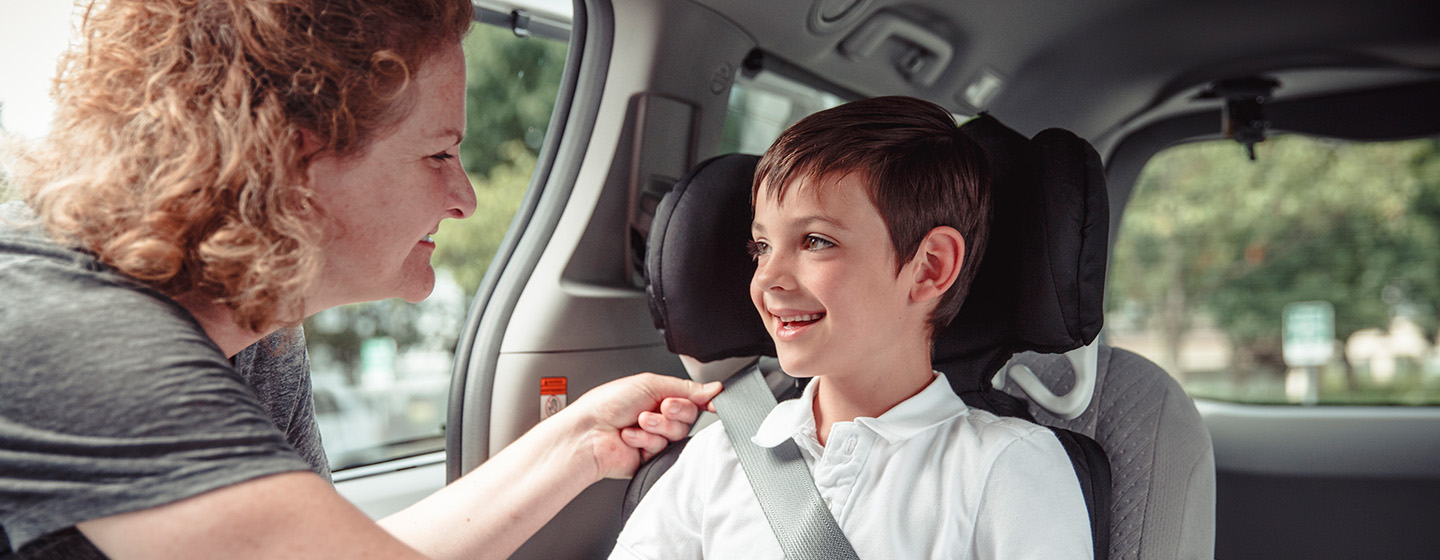Keeping kids safe on the road
Ensuring that your little ones stay safe on the road starts with proper education. BCAA Child Passenger Safety Educators recommend keeping it simple and focusing on getting the basics right. Here’s what’s key to ensuring your kids are safe when travelling in a car.
Become well-educated on child passenger safety
Understand how to choose the correct seat for your child’s age and size.
Choose a child car seat that meets age, weight and height requirements and complies with Canadian Motor Vehicle Safety Standards (CMVSS). Ensure it fits your child and your car. Find our helpful guide at bcaa.com/carseatsafety.
Always follow the child car seat manufacturer’s instructions and read your vehicle owner’s manual.
If you don’t have paper copies of these manuals, they are available on the manufacturer’s website.
Learn and practice how to correctly install your car seat and secure your child in it.
Research shows that a properly installed child car seat reduces the risk of fatality by 71% and the risk of serious injury by 67% (Transport Canada). Read on to learn common mistakes that parents make when installing and securing kids in car seats, and how to avoid them.

Installing your child car seat
Here are the three most common mistakes and the steps that can be taken to identify and fix them.
1. The child car seat is not tightly secured in the vehicle
- Put your hand in the seating area of your child car seat and push down while pulling the seat belt or Universal Anchorage System connectors tight.
- To test for tightness, hold both sides of the child seat at the belt path and firmly move the child seat from side to side and from front to back; there should be no more than 2.5 cm (1 inch) of movement.
2. The seat belt or Universal Anchorage System (UAS) is threaded through the wrong belt path
- This is commonly seen when the child moves from a rear-facing child seat to a forward-facing child seat.
- Check your child car seat instructions on how to rethread the seat belt or UAS through the correct belt path for the rear-facing or forward-facing position.
3. The tether strap is not attached or is too loose
- Secure the tether strap hook to the tether bolt in your vehicle, pull the strap until it’s tight.
- BC law requires the tether strap to be attached on all forward-facing car seats.
Securing your child in their car seat
Here are the three most common mistakes and the steps that can be taken to identify and fix them.
1. The harness straps are not in the correct slots for the rear-facing or forward-facing position
- Before buckling your child in their car seat, check the level of the harness straps.
- If the child seat is to be used rear-facing, the harness straps must be at or below the level of the child’s shoulders.
- If the child seat is to be used forward-facing, the harness straps must be at or above the child’s shoulders. Some infant/child seats specify which harness slots can be used forward-facing.
- To change the harness strap slots or to determine which harness slots can be used, check your child car seat manufacturer’s instructions.
2. The chest clip is out of position
- After the harness has been tightened, the chest clip should be done up and adjusted to your child’s armpit level.
3. The harness straps are too loose
- Tighten the harness straps so that there’s no more than 1 flat finger between the harness straps and your child’s collarbone.
- A snug harness should not allow any slack in the webbing; if you can pinch a fold in the harness strap, it’s too loose.

Ensuring your child’s safety when they ride with others
It’s common for parents to rely on others to get their children where they need to go, and it’s natural for parents to worry about their child’s safety when they aren’t the ones behind the wheel. We’ve put together some helpful advice to give you peace of mind when your child is riding in someone else’s car.
Need help?
Visit bcaa.com/carseatsafety for information and how-to videos or connect with our BCAA Child Passenger Safety Educators by phone: 1.877.247.5551 or email: roadsafety@bcaa.com.







